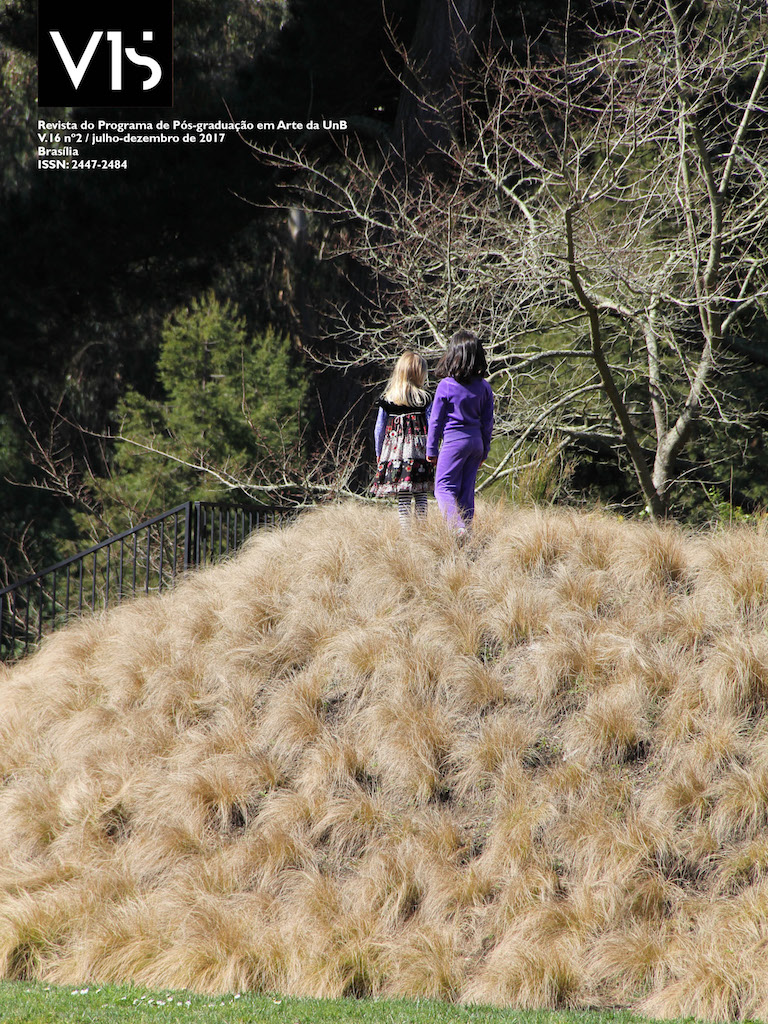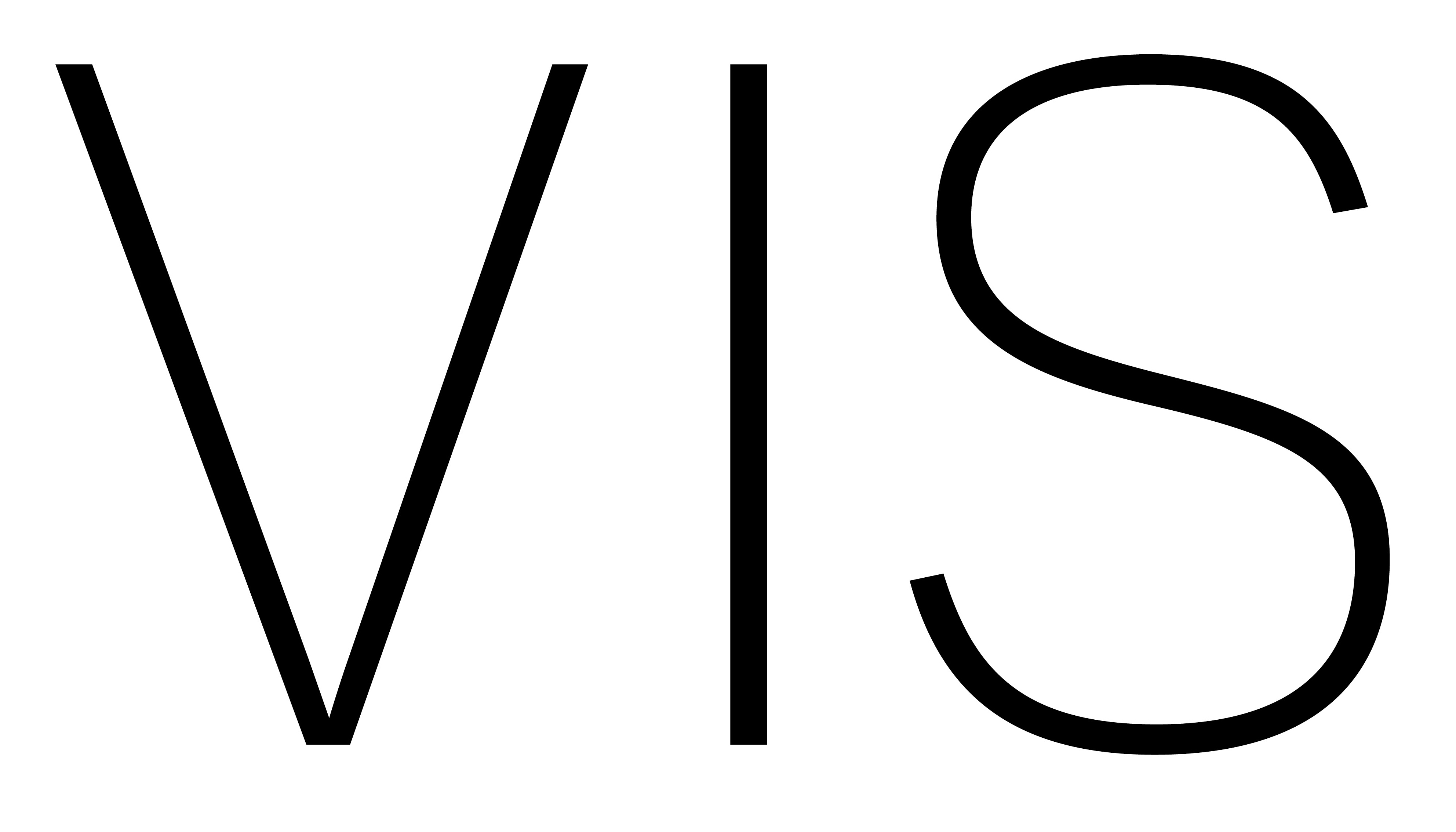O Instrumento Relacional da Investigação em Arte
Apoiando participantes e pesquisadores de origens não-artísticas para se engajarem na a/r/ tografia
DOI:
https://doi.org/10.26512/vis.v16i2.20755Palabras clave:
A/r/tografia. Métodos baseados em artes. Metodologia baseada em artes.Resumen
Este artigo debate o potencial para uma investigação a/r/tográfica dentro dos contextos do esporte e da pesquisa de exercícios. Ele descreve como um Instrumento Relacional de Investigação em Arte (IRIA) foi desenvolvido para auxiliar participantes fora do campo das artes a realizar a a/r/tografia. Antes desta investigação, a metodologia a/r/tográfica foi usada principalmente nos contextos de Ciências Sociais e Artes, já com pesquisadores de esporte e exercício qualitativo ainda não empregaram esta abordagem. Devido à s formas incorporadas de conhecimento e o potencial evocativo uma investigação a/r/tográfica, esta pesquisa procurou elaborar um conjunto de instrumentos orientadores que poderiam ser usados para apoiar pesquisadores e participantes a se envolverem com a a/r/tografia. Isso foi feito como uma forma de ajudá-los a ver e encontrar maneiras de articular a complexidade, a incerteza e o potencial do “não visto” ocorrendo em narrativas. O desenvolvimento da ferramenta RAIT é baseado em uma gama diversificada de teoria e ideias que sustentam a metodologia a/r/tográfica (IRWIN,2004), os elementos de indagação de Gallas (2011) e os hábitos da mente de Hetland (2013). Ao abraçar o potencial a/r/tográfico dentro de um contexto de pesquisa de esporte e exercício, este artigo ilustra como a ferramenta RAIT foi desenvolvida e depois testada para cultivar compreensões transformadoras e interpretação da cultura da natação através de um proocesso de desenvolvimento relacional e criativo.
Descargas
Citas
BICKEL, B. Unveiling a sacred aesthetic: A/r/tography as ritual. In SPRINGGAY, S.; IRWIN, R.; LEGGO, C. and Gouzouasis, P. (Eds.). Being with a/r/toraphy. Rotterdam, Netherlands: Sense Publishers, p.81-94, 2008.
BLODGETT, A.; COHOLIC, D.; SCHINKE, R. J.; MCGANNON, K. R.; PELITIER, D. and PHEASANT, C. Moving beyond words: exploring the use of an arts-based method in Aboriginal community sport research. Qualitative Research in Sport, Exercise and
Health. v.5, n. 3, p.312-331, 2013.
BOYDELL, K. M.; GLADSTONE, B.M.; VOLPE, T.; ALLEMANG, B. and STASIULIS, E. The production and dissemination of knowledge: a scoping review of arts-based health research. Forum qualitative sozial forchung/forum: Qualitative social research. v. 13, n.1, p. 267 -280, 2012.
BUSANICH, R.; MCGANNON, K.R and SCHINKE, R. J. Exploring disordered eating and embodiment in male distance runners through visual narrative methods. Qualitative Research in Sport, Exercise and Health. vol. 8, n. 1, p. 95-112, 2016.
CARLESS, D. What’s in a song? How songs contribute to the communication of social science research. British journal of guidance and counselling. vol. 39, n. 5, p.439”“454, 2011.
DELEUZE, G.; GUATTARI, F. Dialogues. London, United Kingdom: Athlone Press. 1987.
DOUGLAS, K. Signals and signs.QualitativeInquiry, vol. 18, 525-532, 2012.
EWING, R.Arts informed-Research: An Introduction. Presentation at the University of Sydney, 25 July, 2013.
GALLAS, K. Inquiry: Doing what comes naturally, Learning Landscapes, vol. 4, n. 2, 33 ”“ 40, 2011.
GRAVESTOCK, H. M. Embodying understanding: drawing as research in sport and exercise. Qualitative research in sport and exercise, vol. 2, n. 2, 196”“208, 2010.
HETLAND, L.Studio thinking 2: The real benefits of visual arts education. New York: Teachers College Press, 2013.
HOUGE-MACKENZIE, S.; KERR, J. Head mounted cameras and stimulated recall in qualitative sport research. Qualitative Research in Sport, Exercise and Health, vol. 4, n. 1, 51-61, 2012.
IRWIN, R. L. A/r/tography: A metonymic métissage. In R. L. Irwin & A. deCosson (Eds.), A/r/tography: Rendering self through arts-based living. Vancouver, British Columbia, Canada: Educational Press, p. 27-38, 2004.
IRWIN R.L; PARDINAS, M.J.A.; BARNEY, D.T.; CHEN, J.C.H.; CHIUNG, J.; DIAS, B.; JESUS, M., GOLPARIAN, S. and MACDONALD. A. A/r/tography Around the World, The Palgrave Handbook of Global Arts Education, Macmillan Publishers Ltd, G
Barton, M Baguley (ed), United Kingdom, p. 475 ”“ 496, 2017.
JAGODZINSKI, J., WALLIN, J. Arts-based research: A critique and a proposal. The Netherlands: Sense Publishers, 2013.
KIND, S.; de COSSON, A., IRWIN, R. L.; GRAUER, K. Artist-teacher partnerships in learning: The in/between spaces of artist-teacher professional development. Canadian Journal of Education, vol. 30, n. 3, p. 839, 2007.
KLUGGE, M.; GRANT, B.; FRIEND, L.; GLICK, L. Seeing is believing: Telling the inside story of a master’s athlete through film. Qualitative Research in Sport, Exercise and Health, vol. 2, n. 2, 289-292, 2010.
LEAVY, P. Method meets art: Arts-based research practice (Second ed). Guilford Publications, 2015.
LEVI-STRAUSS, C. The savage mind. Chicago, IL: University of Chicago Press, 1962.
MACDONALD, A. ‘Painting research practice: how exploration of a “painting as research” metaphor can be used to refine approaches to conducting research’.Proceedings of the 2012 Australian Association for Research in Education Conference (AARE), 2-6 December, University of Sydney, Australia, 1-10, 2012.
MACDONALD A. ‘Three graces of practice: rendering the reciprocal interactions of artistry and teaching’. Proceedings of the 2016 Australian Association for Research in Education (AARE) Conference, 27 November - 1 December, Melbourne, Victoria, Australia, p. 1-13, 2016.
MACDONALD A.; BAGULEY, M.; KERBY, M. ‘Collaboration as metaphoric construct and guiding practice in art-making and teaching: A multimodal rendering’, Studies in Art Education, p. 1-26, (In Press).
MACDONALD A, MOSS, T. ‘Borderlands: traversing spaces between art making and research’, Qualitative Research Journal, vol. 15, n. 4, p. 445-458, 2015.
MCMAHON, J. ‘Exposure and Effect: An investigation into a culture of body pedagogies’, Unpublished Doctoral thesis, University of Tasmania, Australia.
MCMAHON, J.; DINAN-THOMPSON, M. A malleable body ”“ revelations from an Australian elite swimmer. Healthy lifestyles journal, vol. 55, n. 1, 23”“28, 2008.
MCMAHON, J, MACDONALD, A, OWTON, H. A/r/tographic inquiry in sport and exercise research: a pilot study examining methodology versatility, feasibility and participatory opportunities. Qualitative Research in Sport, Exercise and Health, vol. 9, n. 4, p. 403-417, 2017.
MCMAHON J.; MCGANNON K. ‘Re-immersing into Elite Swimming Culture: A Meta-Autoethnography by a Former Elite Swimmer’, Sociology of Sport Journal, vol. 1, n. 34, 2016.
MCMAHON J.; PENNEY, D.; DINAN-THOMPSON M. ‘’Body practices - exposure
and effect of a sporting culture?’ Stories from three Australian swimmers’, Sport Education and Society, vol. 17, n.2, p.181-206, 2012.
MCNIFF, S. Empathy with the shadow: Engaging and transforming difficulties through art. Journal of Humanistic Psychology, vol. 47, p. 392-399, 2007.
MILLS, C., & HOEBER, L. Using photo elicitation to examine artefacts in a sport club. Logistical considerations and strategies throughout the research process. Qualitative Research in Sport, Exercise and Health, vol. 5, p. 1-20, 2013.
OWTON, H., ALLEN-COLLINSON, J. ‘It stays with you’: Multiple evocative representations of dance and future possibilities for studies in sport and physical cultures, Qualitative Research in Sport, Exercise & Health, 2017.
PHOENIX, C. Seeing the world of physical culture: the potential of visual methods for qualitative research in sport and exercise. Qualitative Research in Sport and Exercise, vol. 2, n. 2, p. 93-108, 2010.
SINCLAIR, C.; JEANNERET, N.; O’TOOLE, J. (Eds.). Education in the arts: Teaching and learning in the contemporary curriculum (Second ed), South Melbourne, VIC: Oxford University Press, 2011.
SMITH, B. Disability, sport and men’s narratives of health: a qualitative study. Health Psychology, vol. 32, n. 1, p. 110-119, 2013.
SPRINGGAY, S. Cloth as intercorporeality: Touch, fantasy, and performance and the construction of body knowledge. International Journal of Education and the Arts, vol. 4, n. 5, 2003.
SPRINGGAY, S.; IRWIN, R. L.; & KIND, S. W. A/r/tography as living inquiry through art and text. Qualitative inquiry, vol. 11, n. 6, p. 897-912, 2005.
SULLIVAN, G. Making space: The purpose and place of practice-led research. Practice-led research, research-led practice in the creative arts, p. 41-65, 2009.
TARR, J.; THOMAS, H. Mapping embodiment: Methodologies for representing pain and injury. Qualitative Research, vol. 11, p. 141-157, 2011.
WINNER, E.; HETLAND, L.; VEENEMA, S.; SHERIDAN, K.; PALMER, P.; LOCHER, I. Studio thinking: how visual arts teaching can promote disciplined habits of mind. New directions in aesthetics, creativity, and the arts, p. 189-205, 2006




